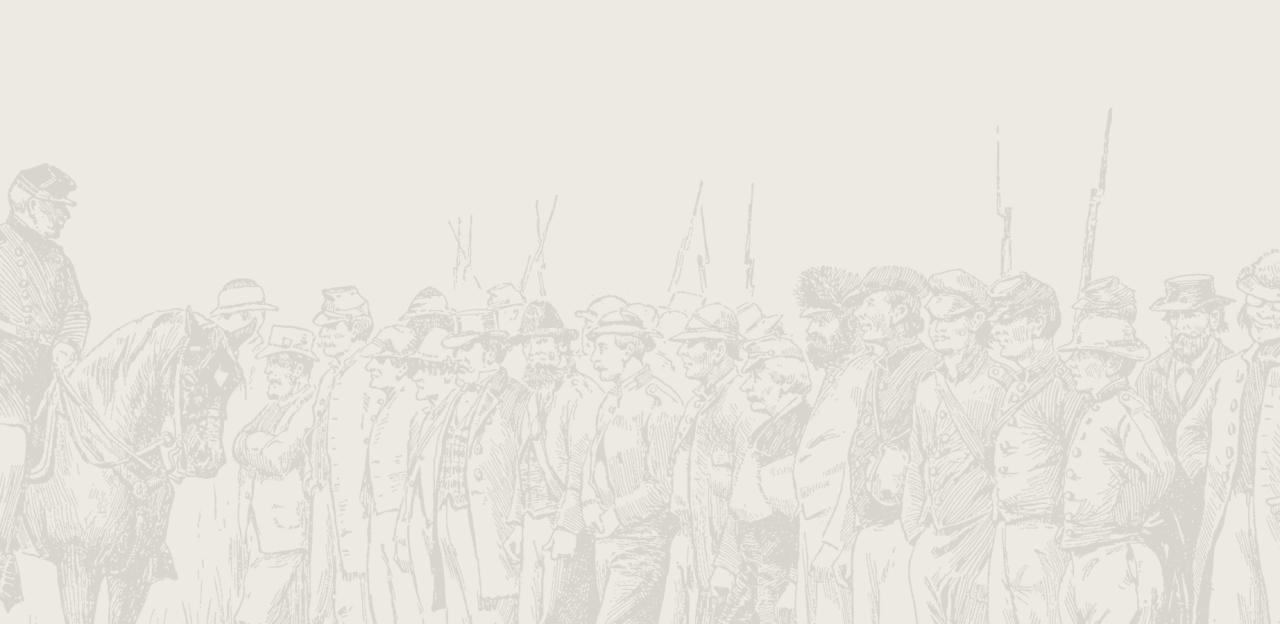Chancellorsville

The Battle of Chancellorsville
Major General Ambrose E. Burnside lasted only a single campaign at the head of the Army of the Potomac. His abject failure at Fredericksburg in December, 1862, followed by further fumbling on January's "Mud March," convinced President Abraham Lincoln to make another change in army commanders.
Major General Joseph Hooker's energetic make-over polished the Northern army into tip-top condition, and with more strength than ever before. Seizing the initiative, Hooker developed a “perfect” but poorly executed plan to trap Robert E. Lee’s army around Fredericksburg between two pincers of his force. With around 130,000 men to Lee’s 60,000, Hooker outmaneuvered Lee the last days of April, when the weather finally allowed roads to harden for marching.
First to move was the Union cavalry which conducted a wide, sweeping movement to the west and then south, but too far away to have any impact on the coming battle. Next, Hooker kept Maj. Gen. John Sedgwick’s VI Corps opposite Fredericksburg to occupy Lee’s attention along the Rappahannock River. Swinging north and west beyond Lee's left with the remainder of his army, Hooker approached the Chancellorsville road intersection on the last evening in April with his V, IX and XII Corps. Continuing eastward toward Lee’s rear, he hoped to escape the clutches of the Wilderness — the tangled, brush-choked thickets that covered the area around the Chancellor family home and tavern.
On May 1, Lee hurriedly gathered his army from its camps. Missing Lieut. Gen. James Longstreet and two divisions of his army wing on a supply gathering expedition in southeast Virginia, Lee hoped to stall Hooker in the Wilderness, where the Union advantage in manpower would be negated. Lee divided his smaller army and pushed his main body west along the Orange Turnpike and the Orange Plank Road toward Hooker, leaving Maj. Gen. Jubal Early’s division to watch Sedgwick at Fredericksburg.
The two forces met near the Zoan Church three miles east of Chancellorsville late on the morning of May 1. On the turnpike, the Union V Corps met Lafayette McLaws’ division and was pushed back after three hours of fighting. Elements of the XII Corps were likewise stopped by Richard Anderson’s division on the Plank Road to the south. Then, inexplicably, Hooker ordered his corps commanders to fall back to Chancellorsville, somehow believing it better to have Lee to attack him there.
Lee would oblige him. That evening, he and Jackson conceived the battle plan for the next day. Early on May 2, Jackson took nearly 30,000 men off on a march that clandestinely crossed the front of the enemy army and swung around behind it. Jackson’s objective was the right flank of the Union line that rested “in the air” along the Orange Turnpike near Wilderness Tavern. That left Lee with only about 15,000 men to hold off Hooker's army around the Chancellorsville crossroads. He skillfully managed that formidable task by feigning attacks with a thin line of skirmishers.
At around 5:00 p.m. Jackson, having completed his circuit around the enemy, unleashed his men in an overwhelming attack on Hooker's right and rear. They shattered the Federal XI Corps and pushed the Northern army back more than two miles.
When Jackson's men burst out of the thickets screaming the “Rebel Yell” that afternoon, they dashed across the high-water mark of the Army of Northern Virginia. Yet three hours later, the army suffered a nadir as low as the afternoon's zenith, when Jackson fell mortally wounded by the mistaken fire of his own men. The forward momentum of Jackson’s infantry that might have carried them to the Rappahannock river fords was checked by darkness and the orders of J.E.B. Stuart, now in temporary command. Both sides settled in for an anxious night, the pickets occasionally exchanging musket fire in the dark.
The long marches and high risks of May 1-2 gave way on the 3rd to a slugging match in the woods on three sides of Chancellorsville intersection. Hooker abandoned key ground in a further display of timidity; Confederate artillery roared from Hazel Grove and Southern infantry doggedly pushed ahead. When a Confederate artillery round smashed into a pillar against which Hooker was leaning, the Federal leader spent an unconscious half hour. His return to semi-sentience disappointed the veteran corps commanders who had hoped, unencumbered by Hooker, to employ their army's considerable untapped might.
By mid-morning, Southern infantry smashed through the final resistance and united in the Chancellorsville clearing. Their boisterous, well-earned, celebration did not last long: word came from the direction of Fredericksburg that the Northern rearguard threatened the army’s rear.
Sedgwick had crossed the Rappahannock and broken through Early’s battle line on Marye’s Heights, a task unachievable the previous December. Pressing west to join Hooker, he met resistance by more Confederates from McLaws’ division at Salem Church on the Plank Road, sent there by Lee who had divided his army a third time. McLaws and Early counterattacked Sedgwick on May 4 and pushed him back across the river, halting the Yankee threat from the east.
On May 5, Hooker held a council of war with his corps commanders. They recommended staying to fight but Hooker had had enough. His army re-crossed the Rappahannock to its north bank early on May 6. The campaign had cost Hooker about 18,000 casualties, and his enemy about 13,000. But none of the losses on either side would resonate as loudly and long as the death of “Stonewall” Jackson.


